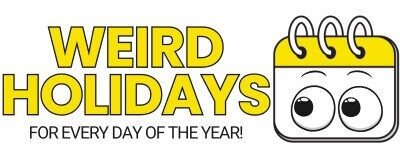Europe Day (May 5 and 9)

Europe Day is a symbolic celebration of peace, unity, and cooperation across Europe.
It’s observed on two separate dates—May 5th by the Council of Europe and May 9th by the European Union.
Whether you’re exploring European history, teaching students about the EU, or just discovering weird holidays in May, this day highlights a shared vision of postwar peace and solidarity.

When is the Holiday?
Europe Day is celebrated on two dates:
May 9th by the European Union, honoring the 1950 Schuman Declaration that proposed the European Coal and Steel Community.
May 5th by the Council of Europe, marking its founding in 1949.

Who Invented It?
It was inspired by French Foreign Minister Robert Schuman, whose 1950 declaration proposed unified coal and steel production.
This laid the groundwork for what would become the European Union.
The Council of Europe chose May 5th to mark its creation, while the EU celebrates May 9th to honor Schuman’s proposal and the broader vision of unity it sparked.

The History of the Holiday
After WWII, European leaders sought lasting peace. In 1950, Schuman suggested pooling coal and steel production to prevent future wars.
This led to the European Coal and Steel Community in 1951, later evolving into the EU.
The Council of Europe, established in 1949 to uphold democracy and human rights, began observing Europe Day in 1964.
The EU adopted May 9th as its own Day in 1985.

Top 5 Facts About the Holiday
Eurovision shares the same postwar spirit – Launched in 1956, the contest was designed to bring people together through entertainment in the wake of WWII.
Public recognition varies widely – May 9 is official across the EU, but only a few countries recognize it with a public holiday.
The EU anthem is purely instrumental – “Ode to Joy” plays without words to honor the linguistic diversity of its member states.
Students often take the lead – Schools and universities mark the occasion with simulations of EU institutions and themed projects.
One campaign used chocolate coins – In 2012, EU-branded sweets were handed out to boost awareness in a playful and memorable way.

Activities to Celebrate
Print and color EU maps, flags, and country fact sheets—perfect for kids learning about Europe for the first time.
Create a mini EU fair at home or school with booths representing different member countries—include flags, snacks, and fun facts.
Host a trivia game focusing on countries, capitals, flags, languages, and historical moments.
Stream EU Parliament tours or EU-focused documentaries, available on many government and educational sites.
Organize a multicultural cooking night featuring simple dishes from a few European countries.

Links to Resources
Europe Worksheets for Kids – Includes printable maps, flags, and country facts for educational fun.
Ukraine Coloring Pages – A free printable set to help kids learn about Ukrainian culture and geography.
Royal Family Coloring Pages – A fun way to explore European monarchies and their traditions.
For the Love of Europe – A personal collection of travel essays from across the continent by one of the most beloved European travel experts.
Europe Read Aloud – A kid-friendly geography book introducing children to the landscape, people, and culture of Europe.

Related Holidays
Several celebrations connect with the spirit of this holiday:
International Day of Friendship (July 30) – Emphasizes global understanding and camaraderie among cultures.
National Handshake Day (last Thursday in June) – Symbolizes connection and unity, echoing themes of collaboration.

Pin it!
Share this post about Europe Day on Pinterest!

